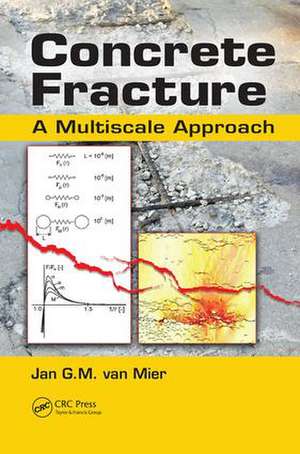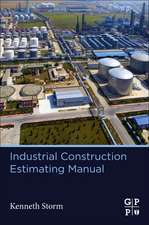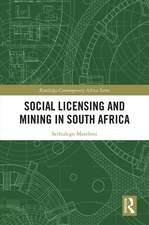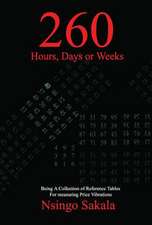Concrete Fracture: A Multiscale Approach
Autor Jan G.M. van Mieren Limba Engleză Paperback – 29 mar 2017
Concrete is a complex hierarchical material, containing material structural elements spanning scales from the nano- to micro- and meso-level. Therefore, multi-scale approaches are essential for a better understanding of mechanical properties and fracture in particular. This volume includes various examples of fracture analyses at the micro- and meso-level. The book presents models accompanied by reliable experiments and explains how these experiments are performed. It also provides numerous examples of test methods and requirements for evaluating quasi-brittle materials. More importantly, it proposes a new modeling approach based on multiscale interaction potential and examines the related experimental challenges facing research engineers and building professionals.
The book’s comprehensive coverage is poised to encourage new initiatives for overcoming the difficulties encountered when performing fracture experiments on cement at the micro-size/scale and smaller. The author demonstrates how the obtained results can fit into the larger picture of the material science of concrete—particularly the design of new high-performance concrete materials which can be put to good use in the development of efficient and durable structures.
| Toate formatele și edițiile | Preț | Express |
|---|---|---|
| Paperback (1) | 585.27 lei 6-8 săpt. | |
| CRC Press – 29 mar 2017 | 585.27 lei 6-8 săpt. | |
| Hardback (1) | 1389.36 lei 6-8 săpt. | |
| CRC Press – 25 oct 2012 | 1389.36 lei 6-8 săpt. |
Preț: 585.27 lei
Preț vechi: 688.56 lei
-15% Nou
Puncte Express: 878
Preț estimativ în valută:
111.99€ • 117.24$ • 92.67£
111.99€ • 117.24$ • 92.67£
Carte tipărită la comandă
Livrare economică 05-19 aprilie
Preluare comenzi: 021 569.72.76
Specificații
ISBN-13: 9781138073524
ISBN-10: 1138073520
Pagini: 382
Ilustrații: 194
Dimensiuni: 156 x 234 x 20 mm
Greutate: 0.45 kg
Ediția:1
Editura: CRC Press
Colecția CRC Press
Locul publicării:Boca Raton, United States
ISBN-10: 1138073520
Pagini: 382
Ilustrații: 194
Dimensiuni: 156 x 234 x 20 mm
Greutate: 0.45 kg
Ediția:1
Editura: CRC Press
Colecția CRC Press
Locul publicării:Boca Raton, United States
Cuprins
Introduction—Why a New Book on Fracture of Concrete? Classical Fracture Mechanics Approaches. Mechanics Aspects of Lattice Models. Lattice Geometry and the Structure of Cement and Concrete. Elastic Properties of Lattice with Particle Overlay. Fracture of Concrete in Tension. Combined Tensile and Shear Fracture of Concrete. Compressive Fracture. Size Effects. Four-Stage Fracture Model. Multiscale Modeling and Testing. Conclusions and Outlook. References. Appendix 1: Some Notes on Computational Efficiency. Appendix 2: Simple Results from Linear Elastic Fracture Mechanics. Appendix 3: Stability of Fracture Experiments. Appendix 4: Crack-Detection Techniques. Appendix 5: Active and Passive Confinement. Index.
Notă biografică
Jan G. M. van Mier received his engineering and Ph.D. degrees from Eindhoven University of Technology. After a postdoctorate year at the University of Colorado in Boulder, he moved to Delft University of Technology. As an associate professor at the Stevin Laboratory, in close cooperation with several Ph.D. students, he developed the Delft lattice model and conducted numerous experiments elucidating the fracture of concrete under a variety of conditions. In 1999, he was appointed "Antonie van Leeuwenhoek" professor at TU Delft, based on excellence in research, and developed and built the new microlab to immerse in fracture studies at smaller size/scales than before. In 2002, he moved to ETH Zurich as full professor and director of the Institute for Building Materials. In 2010, he became president of the International Association for Fracture Mechanics of Concrete and Concrete Structures (IA-FraMCoS).
Descriere
The study of fracture mechanics of concrete has developed to the point where it can be used for assessing the durability of concrete structures and for the development of new concrete materials. This volume includes various examples of fracture analyses at the micro- and meso-level. It presents models accompanied by reliable experiments and explains how these experiments are performed. It also provides numerous examples of test methods and requirements for evaluating quasi-brittle materials. More importantly, it proposes a new modeling approach based on multiscale interaction potential and examines the related experimental challenges facing research engineers and building professionals.

























